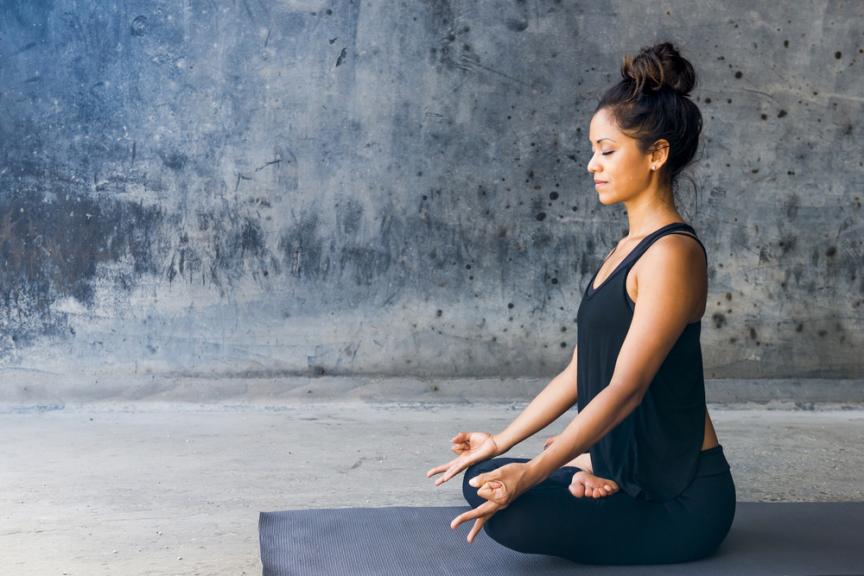It comes down to this.
If we’re going to spend time and effort struggling (at first!) through a meditation practice, how can we be sure that we’ll see results?
We’ve read the articles and studies touting all the benefits of meditation, but as individuals, we can’t exactly pinpoint how (or if at all) it improves our lives.
We know that meditation is a good thing.
The question is – how do we find a practice that gives us the most benefit as quickly as possible?
THE APPROACH: MEDITATION AS EXERCISE
Let’s approach this another way. Think of meditation as nothing more than a form of exercise.
When you start working out, you come with a reason or goal that you want to accomplish. Lose weight. Gain weight. Build strength. Build muscle. Train for a race. General wellness. You get the picture.
Next, you have your health, money and schedule requirements which informs your decision to select a workout from all the options. Pilates, tennis, kickboxing, weight training, running, sprints. You can do it for hours or 10 minutes, at a gym, at home, with a trainer or watching a video.
You try things out. You switch things up. Your routine evolves with improvement.
Meditation is no different. It’s an an exercise in concentration that strengthens the attention and focus muscles. You pick a combination that aligns with your goals, resources and preferences… and commit to it.
THE PRACTICE: MEDITATION SHOPPING
Now you can consider the main meditation techniques that are most popular for beginners:
- Mindfulness. Based on the Buddhist idea of Vipassana meaning “to see things as they really are”, you focus simply on being aware of your thoughts, circumstances, environments and experiences. You’re a bystander, an observer who’s not trying to chase, force, judge or resist anything. You’re simply watching what is happening right now – sounds, thoughts, itches, smells and all. This is what I do in the mornings.
- Concentrative: Another popular practice, concentrative meditation requires a bit more discipline, because it asks you to focus your attention on a single object – the flame of a candle, a flower, a sound, an image, your breath or even a mantra. You might have heard of Transcendental Meditation, which is a form of this technique. A lot of beginners like this because it offers more concrete direction than mindfulness. I’ll be practicing this in the second half of the month.
- Guided: All forms of meditations can be guided, and there are lots of different approaches to it. Here, you listen to the sound of someone else’s voice walk you through a step by step meditation. Often visual in nature (i.e. picture a big white light on top of your head or imagine yourself in a grassy meadow), this is a great and easy way for beginners to be guided through all the elements of a meditation practice from posture to position to breathing and more. Some of it is cheesy, but it does go by more quickly when someone else is talking you through it. This is what I do in the evenings.
- Moving: Tai Chi. Qi Gong. Walking meditation. Kundalini Yoga. Meditation can be fluid too. It involves slow, focused movement with an alert focus on the breath, the physical body and the environment. I’ll be attending some classes in the second half of the month.
BABY STEPS
Try it out for 2 minutes. 5 minutes. Go for a short walk without your headphones. Download a guided meditation. Sign up for a meditative yoga class. Start with something so easy your dog can do it.
Your mind muscles will hurt. You might not like the things you find in there. And you might not enjoy the pleasure of your own company. But that’s the point of all of this – accepting the things we think about. If we can do that, then we can learn to accept the things around us, the people we talk to and the problems we deal with.
So that we can think and act with a smarter, clearer and calmer mind.
Hopefully with not too much effort.











